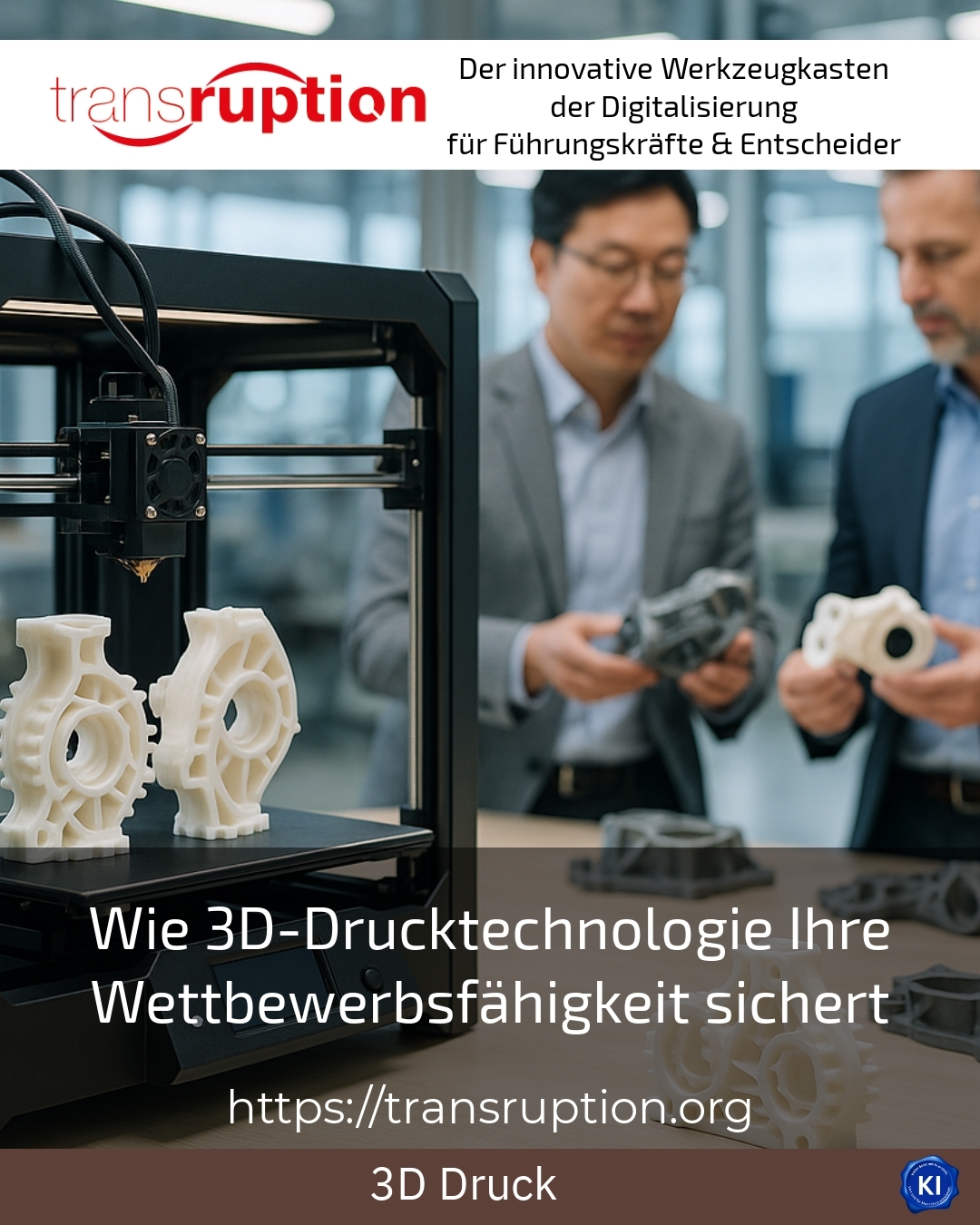3D printing technology is changing the way companies develop and manufacture their products. Many industries are using this technology to strengthen their competitiveness. 3D printing technology enables rapid customisation, reduces costs and accelerates time to market. Companies that use this technology often report new opportunities and impetus for their projects.
Advantages of 3D printing technology for companies
3D printing technology offers many advantages. It reduces up-front costs because no expensive moulds are required. This is particularly important for small series and prototypes. Companies from the medical technology, aerospace and automotive industries use this technology to develop customised solutions.
Another advantage is production on demand. Companies can produce parts exactly when they are needed. This reduces stock levels and saves costs. This technology is also ideal for spare parts that are rarely in demand. In this way, companies avoid surplus stock and can react more flexibly to customer requests.
Sustainability also plays a major role. 3D printing technology is more resource-efficient than traditional manufacturing processes. Only the material that is needed for the part is used. Excess material can often be recycled. This protects the environment and reduces the amount of waste.
Examples from practice
In the automotive industry, customised parts are printed for concept vehicles. This enables fast iterations and customisation. Tooling and manufacturing aids are also produced using this technology. This saves time and costs.
In medical technology, customised implants and prostheses are printed. This improves patient care and enables customised solutions. 3D printing technology is also used in dental applications to produce customised braces and crowns.
In the jewellery and fashion sector, designers can create complex geometries and individual designs. This makes new products possible and sets them apart from mass production. Customised products and small batches are also easy to implement with this technology.
3D printing technology and supply chains
3D printing technology is changing supply chains. Companies can produce parts locally and independently of external suppliers. This reduces the risk of supply bottlenecks and lowers transport costs. Communication with multiple suppliers is also eliminated.
One example is the storage of spare parts in the automotive industry. Traditionally, spare parts are stored for years, even though they are rarely needed. With 3D printing technology, spare parts can be produced on demand. This saves storage costs and reduces inventory.
Spare parts for aeroplanes are also printed in the aerospace industry. This enables fast and flexible supply. This technology is also ideal for older aircraft models for which spare parts are difficult to obtain.
Examples from practice
A car manufacturer uses 3D printing technology to produce spare parts for classic cars. This saves storage costs and enables customers to be supplied quickly.
An aircraft manufacturer prints spare parts for older aircraft models. This reduces dependence on external suppliers and cuts costs.
A medical technology company produces customised implants for patients. This improves care and enables customised solutions.
3D printing technology and innovation
3D printing technology promotes innovation. Companies can realise complex geometries and individual designs. This makes new products possible and sets them apart from mass production. Product development is also accelerated because prototypes can be produced faster and more cost-effectively.
One example is the development of high-performance vehicles. Complex and lightweight components can be produced using 3D printing technology. This improves performance and reduces weight.
Complex components are also printed in the aerospace industry. This enables new designs and improves performance. The production of tooling and manufacturing aids is also accelerated.
Examples from practice
A car manufacturer develops high-performance vehicles with complex and lightweight components. This improves performance and reduces weight.
An aircraft manufacturer prints complex components for aeroplanes. This enables new designs and improves performance.
A medical technology company produces customised implants for patients. This improves care and enables customised solutions.
BEST PRACTICE at the customer (name hidden due to NDA contract) A car manufacturer uses 3D printing technology to produce spare parts for classic cars. This saves storage costs and enables customers to be supplied quickly. Production on demand reduces inventory and cuts costs. Communication with several suppliers is also eliminated. The company can respond more flexibly to customer requests and offer customised solutions.
My analysis
3D printing technology offers many advantages for companies. It reduces costs, accelerates time to market and promotes innovation. Companies that use this technology often report new opportunities and impetus for their projects. 3D printing technology changes supply chains and enables flexible and sustainable production. Product development is also accelerated and customised solutions are easy to implement. Companies that actively engage with 3D printing technology can strengthen their competitiveness and better fulfil the needs of their customers.
Further links from the text above:
6 underestimated benefits of 3D printing for your supply chain
5 advantages (and disadvantages) of 3D printing
What are the advantages of 3D printing?
Advantages of 3D printing for small businesses
The pros and cons of 3D printing
25 (unexpected) applications for 3D printing
3D printing in industry: advantages and areas of application
For more information and if you have any questions, please contact Contact us or read more blog posts on the topic TRANSRUPTION here.
















